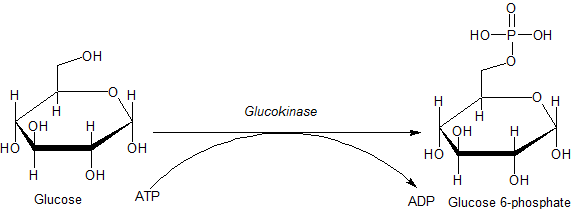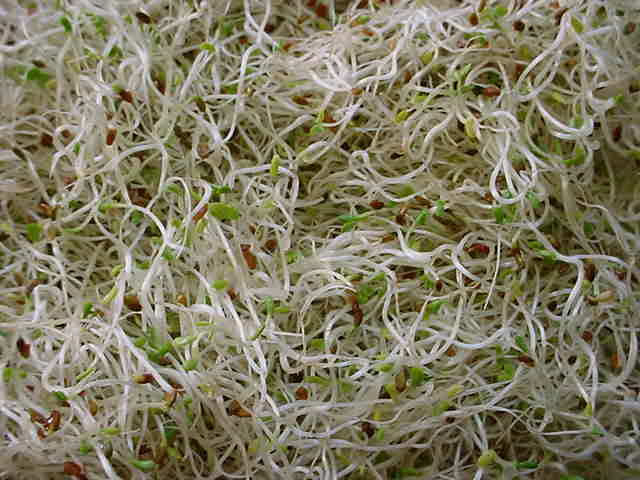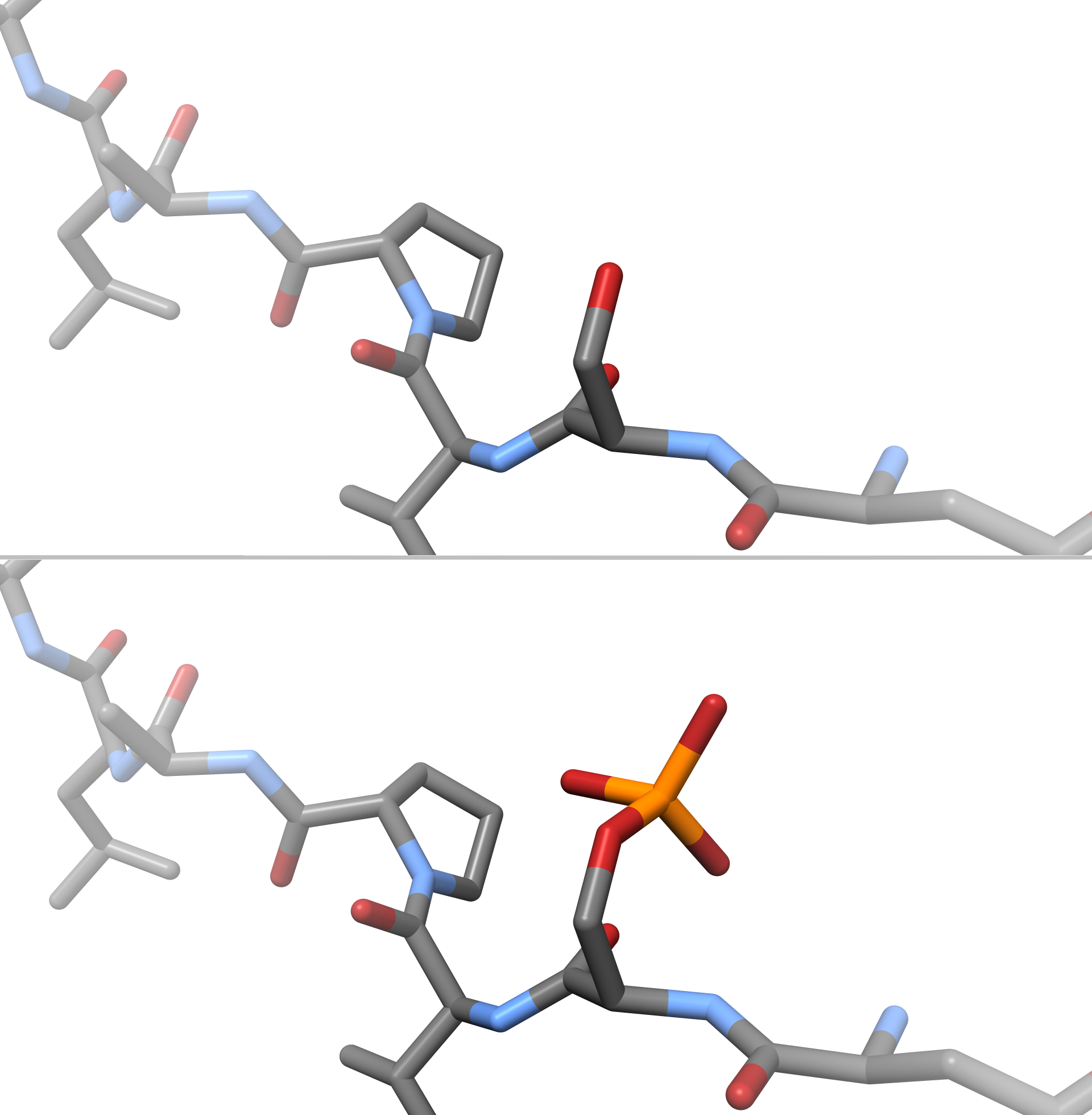|
Mannoheptulose
Mannoheptulose is a heptose, a monosaccharide with seven carbon atoms, and a ketose, with the characteristic carbonyl group of the carbohydrate present on a secondary carbon (functioning as a ketone group). The sugar alcohol form of mannoheptulose is known as perseitol. Inhibition of hexokinases Mannoheptulose is a competitive and non-competitive inhibitor of both hexokinase and the related liver isozyme glucokinase. By blocking the enzyme hexokinase, it prevents glucose phosphorylation, the first step in the fundamental biochemical pathway of glycolysis. As a result, the breakdown of glucose is inhibited. Because of its inhibition of glycolysis '' in vitro'', it has been investigated as a novel nutraceuticals for weight management for dogs. However, while mannoheptulose is suggested to affect the energy balance of adult dogs, independent of dosage and physical activity, research disagrees whether it significantly alters energy expenditure in dogs. Inhibition of insu ... [...More Info...] [...Related Items...] OR: [Wikipedia] [Google] [Baidu] |
Heptose
A heptose is a monosaccharide with seven carbon atoms. They have either an aldehyde functional group in position 1 (aldoheptoses) or a ketone functional group in position 2, 3 or 4 (ketoheptoses). Ketoheptoses have 4 chiral centers, whereas aldoheptoses have 5. Examples There are few examples of seven-carbon sugars in nature, among which are: * sedoheptulose or D-''altro''-heptulose (a ketose), an intermediate in the Calvin cycle and in lipid A biosynthesis * mannoheptulose (a ketose), found in avocado The avocado (''Persea americana'') is a medium-sized, evergreen tree in the laurel family (Lauraceae). It is native to Americas, the Americas and was first domesticated by Mesoamerica, Mesoamerican tribes more than 5,000 years ago. Pre-Columb ...es * L-''glycero''-D-''manno''-heptose (an aldose), a late intermediate in lipid A biosynthesis. References {{Biochem-stub ... [...More Info...] [...Related Items...] OR: [Wikipedia] [Google] [Baidu] |
Glucokinase
Glucokinase () is an enzyme that facilitates phosphorylation of glucose to glucose-6-phosphate. Glucokinase occurs in cells in the liver and pancreas of humans and most other vertebrates. In each of these organs it plays an important role in the regulation of carbohydrate metabolism by acting as a glucose sensor, triggering shifts in metabolism or cell function in response to rising or falling levels of glucose, such as occur after a meal or when fasting. Mutations of the gene for this enzyme can cause unusual forms of diabetes or hypoglycemia. Glucokinase (GK) is a hexokinase isozyme, related homologously to at least three other hexokinases. All of the hexokinases can mediate phosphorylation of glucose to glucose-6-phosphate (G6P), which is the first step of both glycogen synthesis and glycolysis. However, glucokinase is coded by a separate gene and its distinctive kinetic properties allow it to serve a different set of functions. Glucokinase has a lower affinit ... [...More Info...] [...Related Items...] OR: [Wikipedia] [Google] [Baidu] |
Primula Vulgaris
''Primula vulgaris'', the common primrose, is a species of flowering plant in the family Primulaceae, native to western and southern Europe, northwest Africa, and parts of southwest Asia.''Flora Europaea''''Primula vulgaris''/ref> The common name is primrose,Natural History Museum''Primula vulgaris''/ref> or occasionally common primrose or English primrose to distinguish it from other ''Primula'' species also called primroses. None of these are closely related to the evening primroses (genus ''Oenothera''). Etymology The scientific name ''Primula'' is a diminutive of the Latin ''primus'', "prime", alluding to the fact that this flower is among the first to appear in spring. The vernacular name has the same meaning: primrose derives from a late Latin Late Latin ( la, Latinitas serior) is the scholarly name for the form of Literary Latin of late antiquity.Roberts (1996), p. 537. English dictionary definitions of Late Latin date this period from the , and continuing into the 7t ... [...More Info...] [...Related Items...] OR: [Wikipedia] [Google] [Baidu] |
Common Fig
The fig is the edible fruit of ''Ficus carica'', a species of small tree in the flowering plant family Moraceae. Native to the Mediterranean and western Asia, it has been cultivated since ancient times and is now widely grown throughout the world, both for its fruit and as an ornamental plant.''The Fig: its History, Culture, and Curing'', Gustavus A. Eisen, Washington, Govt. print. off., 1901 ''Ficus carica'' is the type species In zoological nomenclature, a type species (''species typica'') is the species name with which the name of a genus or subgenus is considered to be permanently taxonomically associated, i.e., the species that contains the biological type specimen( ... of the genus ''Ficus'', containing over 800 tropical and subtropical plant species. A fig plant is a small deciduous tree or large shrub growing up to tall, with smooth white bark. Its large leaves have three to five deep lobed leaf, lobes. Its fruit (referred to as syconium, a type of multiple fruit) i ... [...More Info...] [...Related Items...] OR: [Wikipedia] [Google] [Baidu] |
Avocado
The avocado (''Persea americana'') is a medium-sized, evergreen tree in the laurel family (Lauraceae). It is native to Americas, the Americas and was first domesticated by Mesoamerica, Mesoamerican tribes more than 5,000 years ago. Pre-Columbian era, Then as now it was prized for its large and unusually Avocado oil, oily fruit. The tree likely originated in the highlands bridging south-central Mexico and Guatemala. Its fruit, sometimes also referred to as an alligator or avocado pear, is botanically a large Berry (botany), berry containing a single large seed. Avocado trees are partially Self-pollination, self-pollinating, and are often Plant propagation, propagated through grafting to maintain consistent fruit output. Avocados are presently cultivated in the Tropics, tropical and Mediterranean climates of many countries. Agriculture in Mexico, Mexico is the world's List of countries by avocado production, leading producer of avocados as of 2020, supplying nearly 30% of the glo ... [...More Info...] [...Related Items...] OR: [Wikipedia] [Google] [Baidu] |
Alfalfa
Alfalfa () (''Medicago sativa''), also called lucerne, is a perennial flowering plant in the legume family Fabaceae. It is cultivated as an important forage crop in many countries around the world. It is used for grazing, hay, and silage, as well as a green manure and cover crop. The name alfalfa is used in North America. The name lucerne is the more commonly used name in the United Kingdom, South Africa, Australia, and New Zealand. The plant superficially resembles clover (a cousin in the same family), especially while young, when trifoliate leaves comprising round leaflets predominate. Later in maturity, leaflets are elongated. It has clusters of small purple flowers followed by fruits spiralled in 2 to 3 turns containing 10–20 seeds. Alfalfa is native to warmer temperate climates. It has been cultivated as livestock fodder since at least the era of the ancient Greeks and Romans. Etymology The word ''alfalfa'' is a Spanish modification of the Arabic word ''a ... [...More Info...] [...Related Items...] OR: [Wikipedia] [Google] [Baidu] |
Nutraceuticals
A nutraceutical or bioceutical is a pharmaceutical alternative which claims physiological benefits. In the US, "nutraceuticals" are largely unregulated, as they exist in the same category as dietary supplements and food additives by the FDA, under the authority of the Federal Food, Drug, and Cosmetic Act. Regulation Nutraceuticals are treated differently in different jurisdictions. Canada Under Canadian law, a nutraceutical can either be marketed as a food or as a drug; the terms "nutraceutical" and "functional food" have no legal distinction, referring to "a product isolated or purified from foods that is generally sold in medicinal forms not usually associated with food ndis demonstrated to have a physiological benefit or provide protection against chronic disease." United States The terms "nutraceutical" and 'bioceutical' are not defined by US law. Depending on its ingredients and the claims with which it is marketed, a product is regulated as a drug, dietary supplement ... [...More Info...] [...Related Items...] OR: [Wikipedia] [Google] [Baidu] |
In Vitro
''In vitro'' (meaning in glass, or ''in the glass'') studies are performed with microorganisms, cells, or biological molecules outside their normal biological context. Colloquially called "test-tube experiments", these studies in biology and its subdisciplines are traditionally done in labware such as test tubes, flasks, Petri dishes, and microtiter plates. Studies conducted using components of an organism that have been isolated from their usual biological surroundings permit a more detailed or more convenient analysis than can be done with whole organisms; however, results obtained from ''in vitro'' experiments may not fully or accurately predict the effects on a whole organism. In contrast to ''in vitro'' experiments, '' in vivo'' studies are those conducted in living organisms, including humans, and whole plants. Definition ''In vitro'' ( la, in glass; often not italicized in English usage) studies are conducted using components of an organism that have been isolated f ... [...More Info...] [...Related Items...] OR: [Wikipedia] [Google] [Baidu] |
Glycolysis
Glycolysis is the metabolic pathway that converts glucose () into pyruvate (). The free energy released in this process is used to form the high-energy molecules adenosine triphosphate (ATP) and reduced nicotinamide adenine dinucleotide (NADH). Glycolysis is a sequence of ten reactions catalyzed by enzymes. Glycolysis is a metabolic pathway that does not require oxygen (In anaerobic conditions pyruvate is converted to lactic acid). The wide occurrence of glycolysis in other species indicates that it is an ancient metabolic pathway. Indeed, the reactions that make up glycolysis and its parallel pathway, the pentose phosphate pathway, occur in the oxygen-free conditions of the Archean oceans, also in the absence of enzymes, catalyzed by metal. In most organisms, glycolysis occurs in the liquid part of cells, the cytosol. The most common type of glycolysis is the ''Embden–Meyerhof–Parnas (EMP) pathway'', which was discovered by Gustav Embden, Otto Meyerhof, and Jak ... [...More Info...] [...Related Items...] OR: [Wikipedia] [Google] [Baidu] |
Biochemical Pathway
In biochemistry, a metabolic pathway is a linked series of chemical reactions occurring within a cell. The reactants, products, and intermediates of an enzymatic reaction are known as metabolites, which are modified by a sequence of chemical reactions catalyzed by enzymes. In most cases of a metabolic pathway, the product of one enzyme acts as the substrate for the next. However, side products are considered waste and removed from the cell. These enzymes often require dietary minerals, vitamins, and other cofactors to function. Different metabolic pathways function based on the position within a eukaryotic cell and the significance of the pathway in the given compartment of the cell. For instance, the, electron transport chain, and oxidative phosphorylation all take place in the mitochondrial membrane. In contrast, glycolysis, pentose phosphate pathway, and fatty acid biosynthesis all occur in the cytosol of a cell. There are two types of metabolic pathways that are characterize ... [...More Info...] [...Related Items...] OR: [Wikipedia] [Google] [Baidu] |
Phosphorylation
In chemistry, phosphorylation is the attachment of a phosphate group to a molecule or an ion. This process and its inverse, dephosphorylation, are common in biology and could be driven by natural selection. Text was copied from this source, which is available under a Creative Commons Attribution 4.0 International License. Protein phosphorylation often activates (or deactivates) many enzymes. Glucose Phosphorylation of sugars is often the first stage in their catabolism. Phosphorylation allows cells to accumulate sugars because the phosphate group prevents the molecules from diffusing back across their transporter. Phosphorylation of glucose is a key reaction in sugar metabolism. The chemical equation for the conversion of D-glucose to D-glucose-6-phosphate in the first step of glycolysis is given by :D-glucose + ATP → D-glucose-6-phosphate + ADP :ΔG° = −16.7 kJ/mol (° indicates measurement at standard condition) Hepatic cells are freely permeable to glucose, an ... [...More Info...] [...Related Items...] OR: [Wikipedia] [Google] [Baidu] |
Glucose
Glucose is a simple sugar with the molecular formula . Glucose is overall the most abundant monosaccharide, a subcategory of carbohydrates. Glucose is mainly made by plants and most algae during photosynthesis from water and carbon dioxide, using energy from sunlight, where it is used to make cellulose in cell walls, the most abundant carbohydrate in the world. In energy metabolism, glucose is the most important source of energy in all organisms. Glucose for metabolism is stored as a polymer, in plants mainly as starch and amylopectin, and in animals as glycogen. Glucose circulates in the blood of animals as blood sugar. The naturally occurring form of glucose is -glucose, while -glucose is produced synthetically in comparatively small amounts and is less biologically active. Glucose is a monosaccharide containing six carbon atoms and an aldehyde group, and is therefore an aldohexose. The glucose molecule can exist in an open-chain (acyclic) as well as ring (cyclic) form. ... [...More Info...] [...Related Items...] OR: [Wikipedia] [Google] [Baidu] |









